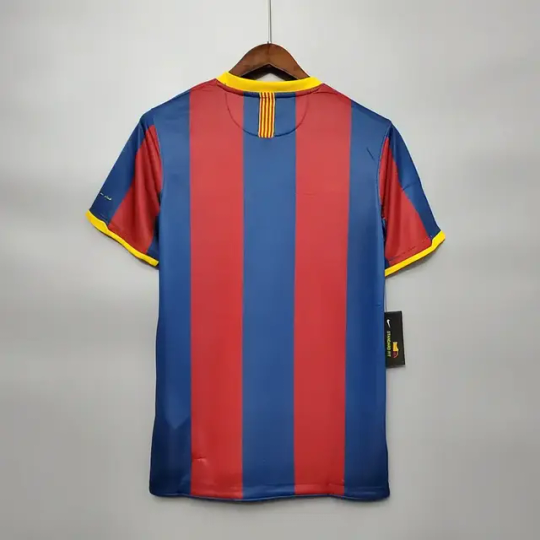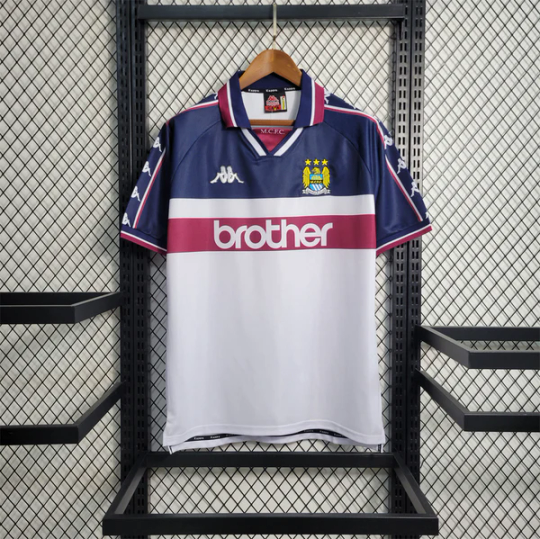#Footballhistory
Explore tagged Tumblr posts
Text


🚨 Throwback to Glory! 🚨
Relive the magic of Barcelona’s iconic 2010-11 season with the Home Retro Version Jersey! ⚽️💙
❤️ The perfect way to honour the legendary squad that dominated Europe and the world, featuring names like Messi, Xavi, Iniesta, and Piqué.
Whether you're a die-hard Barca fan or a collector of football history, this retro jersey is a must-have! 🏆💫
👉 Get yours now and wear a piece of history! 🔥
https://frequentdeals.com/product/buy-barcelona-home-retro-version-soccer-jersey-2010-11/
#FCBarcelona#Barça#Messi#Xavi#Iniesta#Piqué#RetroJersey#FootballHistory#BarcaLegend#CampNou#LaLiga#SoccerCollectors#FootballFashion#VintageFootball#BarçaFans#BarçaTillIDie#FootballStyle#SoccerCulture#FCB#ViscaElBarça#BarçaForever#FootballLove#JerseyCollector
5 notes
·
View notes
Text
Discover the fascinating journey of the NFL, from its humble beginnings to becoming a global sports powerhouse. Learn about key moments that shaped the league into what it is today!
2 notes
·
View notes
Text
Real Madrid's All-Time Top Goal Scorers: Legends on the Score Sheet
Real Madrid's All-Time Top Goal Scorers: Legends on the Score Sheet
Here's a breakdown of Real Madrid's top goal scorers, highlighting their remarkable contributions:

1 Cristiano Ronaldo
Goals: 450
Matches: 438
Years: 2009-2018
2 Karim Benzema
Goals: 354
Matches: 648
Years: 2009-2023
3 Raul Gonzalez
Goals: 323
Matches: 741
Years: 1994-2010
4 Alfredo Di Stefano
Goals: 308
Matches: 396
Years: 1953-1964
5 Carlos Santillana
Goals: 290
Matches: 645
Years: 1971-1988
6 Ferenc Puskas
Goals: 242
Matches: 262
Years: 1958-1967
7 Hugo Sanchez
Goals: 208
Matches: 282
Years: 1985-1992
8 Francisco 'Paco' Gento
Goals: 182
Matches: 600
Years: 1953-1971
9 Pirri
Goals: 172
Matches: 561
Years: 1964-1980
10 Emilio Butragueno
Goals: 171
Matches: 463
Years: 1983-1995
11 Amancio Amaro
Goals: 155
Matches: 471
Years: 1962-1976
12 Michel
Goals: 130
Matches: 559
Years: 1982-1996
13 Fernando Hierro
Goals: 127
Matches: 601
Years: 1989-2003
14 Pahino
Goals: 125
Matches: 143
Years: 1948-1953
15 Juanito
Goals: 121
Matches: 401
Years: 1977-1987
16 Gonzalo Higuain
Goals: 121
Matches: 264
Years: 2007-2013
17 Gareth Bale
Goals: 106
Matches: 258
Years: 2013-2020, 2021-2022
18 Ronaldo Nazario
Goals: 104
Matches: 177
Years: 2002-2007
19 Luis Molowny
Goals: 104
Matches: 198
Years: 1946-1957
20 Sergio Ramos
Goals: 101
Matches: 671
Years: 2005-2021
21 Ivan Zamorano
Goals: 101
Matches: 173
Years: 1992-1996
These players have left an indelible mark on Real Madrid's history with their goal-scoring prowess.
#realmadrid#legends#goalsscored#footballhistory#cristianoronaldo#karimbenzema#raulgonzalez#alfredodistefano#carlossantillana#amancioamaro#gonzalohiguain#garethbale#ronaldonazario#luismolowny#sergioramos#ivanzamorano
4 notes
·
View notes
Photo

Mourinho's Inter Milan 2009 transfer window was legendary! Did it build a treble-winning team? 🤔 BBC Sport dives in! Watch now & debate: Greatest window EVER?! 🏆👇 https://www.youtube.com/watch?v=qQIhZc2eqy4
0 notes
Text

Celebrate football greatness with the iconic Pro Football Hall of Fame Gold Coat — a timeless symbol of achievement worn by the NFL’s legends. Crafted to honor excellence on the gridiron, this distinctive gold jacket is perfect for collectors, fans, or anyone who wants to channel the prestige of football’s elite.
#ProFootballHallOfFame#GoldJacket#NFLLegends#FootballHistory#HallOfFameStyle#NFLGear#SportsCollectors#FootballFans#GridironGreats#NFLFashion#LegendStatus#SportsHeritage#FootballApparel#NFLMerchandise#HonoringGreatness
0 notes
Text
Redondo's Genius, Chelsea's Chaos & Lazio's Collapse: UCL 99/00 Knockouts
youtube
The wildest Champions League knockout stage in history? In this episode of The Main Event, we break down the explosive second group phase and quarterfinals from the 1999/2000 season.
🔔𝐃𝐨𝐧'𝐭 𝐟𝐨𝐫𝐠𝐞𝐭 𝐭𝐨 𝐬𝐮𝐛𝐬𝐜𝐫𝐢𝐛𝐞 𝐭𝐨 𝐨𝐮𝐫 𝐜𝐡𝐚𝐧𝐧𝐞𝐥 𝐟𝐨𝐫 𝐦𝐨𝐫𝐞 𝐮𝐩𝐝𝐚𝐭𝐞𝐬. / @anditslivepodcast
⭐⭐⭐Audio Podcast is currently on your favourite platforms:
Spotify:https://open.spotify.com/show/527ZEHL...
ApplePodcast:https://podcasts.apple.com/us/podcast...
✅ Important Link to Follow
🔗 Linktree https://linktr.ee/anditslivepod
🔗 Stay Connected With Us.
Instagram: / anditslivepodcast
Tiktok: / anditslivepod
Twitter (X): https://x.com/anditslivepod
Bluesky: https://bsky.app/profile/anditslivepo...
📩 For business inquiries: [email protected]
===========================
#ChampionsLeague#FootballHistory#AndItsLive#UCL#RealMadrid#ManchesterUnited#Barcelona#Valencia#Lazio#Chelsea#Youtube
0 notes
Text
#CristianoRonaldo#Football#GreatestPlayer#Biography#FootballLegend#RonaldoBiography#SportsIcons#FootballHistory#RonaldoAchievements
1 note
·
View note
Text
#sports#cristiano ronaldo#football#wiki#life story#GreatestPlayer#Biography#FootballLegend#RonaldoBiography#FootballHistory#RonaldoAchievements#GreatestFootballer#FIFA#RonaldoRecords#SoccerLegend
1 note
·
View note
Text
"Messi vs. Ronaldo? Madrid vs. Barca? These rivalries didn’t just change football—they became legendary. Which one do YOU live for? 👀🔥"
#footballrivalry #elclasico #messivsronaldo #footballlegends #soccerhistory
1 note
·
View note
Text
#Qatar2022? ⚽🏆#FIFA2022#Qatar2022#WorldCupMemories#FootballFans#SoccerLife#QatarWorldCup#FIFAWorldCup#WorldCup#FootballHistory#FIFA#FootballPassion#UnforgettableMoments#GoalOfTheYear#SoccerCulture#FootballFamily#FIFAHighlights#FIFAWorldCup2022#QatarMemories#WorldCup2022Final#FootballLove#SoccerFans#FootballLegend#QatarExperience#FootballGoals#TeamSpirit#doghealth#thinline#floydmayweather#day10
0 notes
Text


🔵⚽️ Relive the classic era with the Manchester City Away 1997-98 Retro Soccer Jersey! 👕
👉 Celebrate the history of the Sky Blues with this iconic retro jersey, a must-have for every true Manchester City fan. Wear it with pride and showcase your love for the club!
🛒 Get yours now and own a piece of football history! 🔗 https://frequentdeals.com/product/buy-manchester-city-away-1997-98-retro-soccer-jersey/
#mancity#retrojersey#footballhistory#manchestercity#skyblues#soccerfan#footballnostalgia#sportswear#footballlegend#footballjersey#cityzens#soccergear#vintagekit#classicjersey#mcfc
3 notes
·
View notes
Text
⚽️ The Fascinating History of Football! 🏆
Football, the world’s most popular sport, has a rich history that spans thousands of years. From ancient times to the modern global phenomenon, it’s a journey filled with excitement and evolution. Let’s take a closer look at its story.
The Origins of Football
⚡ China: The earliest form of football is believed to be Cuju, played in ancient China around 200 BCE. It involved kicking a leather ball into a small net. ⚡ Greece and Rome: In ancient Greece, a game called Episkyros was played, and the Romans later adopted it as Harpastum. These games were more physical and involved a lot of handling. ⚡ Medieval Europe: During the Middle Ages, football-like games were played during festivals and celebrations, often in chaotic, large gatherings on streets.
The Rise of Modern Football
⚽ 1863: Modern football began in England with the establishment of the Football Association (FA). For the first time, standardized rules were created, including the ban on handling the ball. ⚽ 1872: The first official international match was played between Scotland and England. ⚽ 1904: FIFA (Fédération Internationale de Football Association) was founded in Paris to govern international competitions. ⚽ 1930: The inaugural FIFA World Cup was held in Uruguay, featuring 13 teams.
Football Today
Today, football is the most popular sport globally, with leagues like the English Premier League, La Liga, and tournaments like the UEFA Champions League and the FIFA World Cup captivating millions of fans.
Football isn’t just a game—it’s a symbol of passion, unity, and culture. It brings together people from all walks of life and continues to inspire generations.

0 notes
Text
Something about unlucky athletes
One of the unluckiest goalkeepers in football history was the Brazilian Moacir Barbosa. He was the man in goal during the historic 1950 Maracanã final, when the Seleção suffered a shocking 2-1 defeat against Uruguay. Barbosa would forever, and unfairly, be remembered as the goalkeeper of the Maracanazo—the one who conceded Ghiggia’s decisive goal and became the scapegoat of an entire nation for the loss that cost Brazil the dream of winning the World Cup on home soil. He was the first Black goalkeeper for Brazil’s national team and one of the most successful players in Vasco da Gama’s history. However, his talent and achievements were overshadowed by that single event, and Barbosa became known to everyone as "the goalkeeper who made Brazil cry." Mothers would even point him out to their children on the streets of Rio, as though he were a warning.
In 1993, Barbosa went to the Maracanã to watch the national team train for the 1994 World Cup, but he was recognized by one of the coach’s assistants and asked to leave the stadium. It was feared that his presence might bring bad luck. Thus, the goalkeeper of the Maracanazo became a victim of his nation’s hatred and prejudice, spending the rest of his life in social isolation. For Brazilians, it was as if he had never existed, condemned to eternal oblivion.

#MoacirBarbosa#FootballHistory#1950WorldCup#BrazilianTragedy#GoalkeeperLegacy#UnfairBlame#FootballScapegoat#BlackGoalkeeper#MaracanaMemories#BrazilVsUruguay#FootballLegends#SportsTragedy#ForgottenHeroes#BarbosaStory
1 note
·
View note
Text
0 notes
Text





🏴⚽️ Relive the glory with the England Home Retro 1998 Half Sleeve Soccer Jersey!
👕 👉 Step back in time and celebrate England's football heritage with this iconic retro jersey.
A must-have for every devoted Three Lions fan!
🛒 Get yours now and wear a piece of history! 🔗
https://buff.ly/3zThY1E
0 notes
Text
⚽️🏆 Legendary Football Facts! 🌟 Discover the most unforgettable moments in football history! From record-breaking goals to legendary players, dive into the facts that shaped the game. ⚽️🏆🌟
#Football#Soccer#FootballFacts#LegendaryPlayers#WorldCup#PremierLeague#ChampionsLeague#FootballHistory#CristianoRonaldo#Neymar#GianluigiBuffon#JustFontaine#AlanShearer#AndyCole#ShaneLong#AntonioCarbajal#LotharMatthäus#FootballLegends#Goals#Glory
0 notes